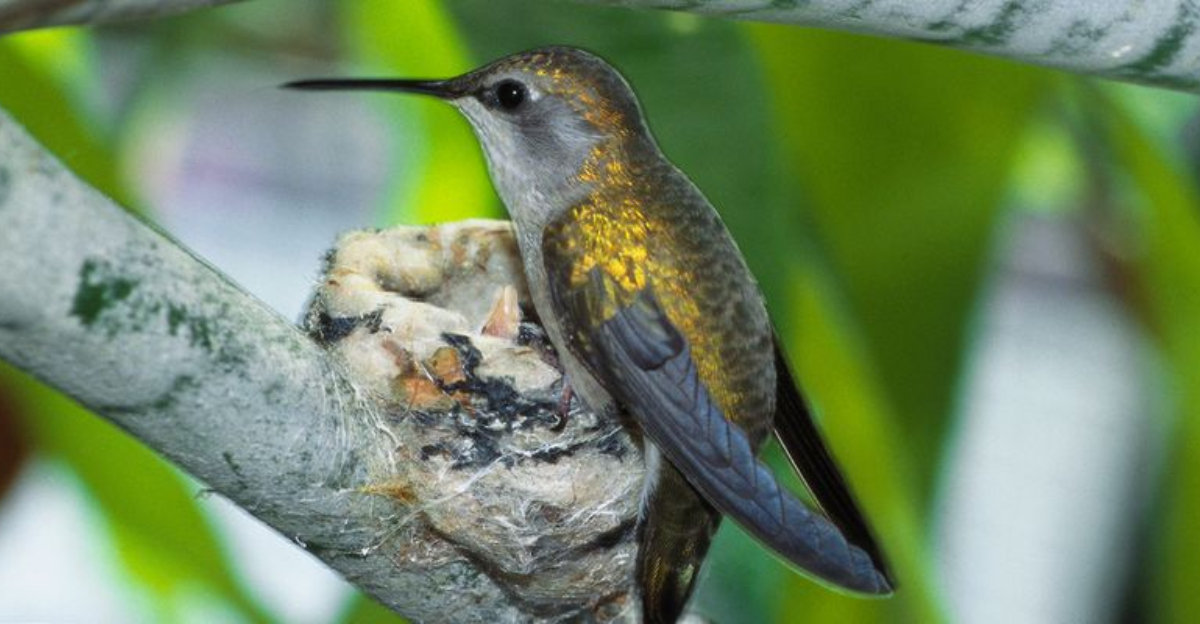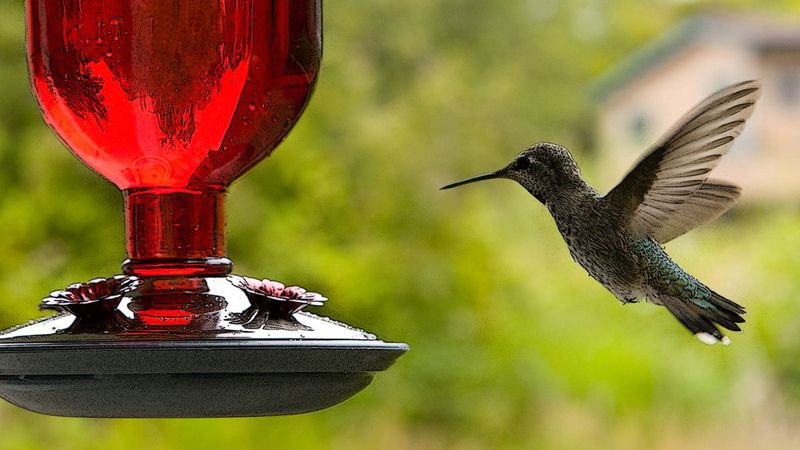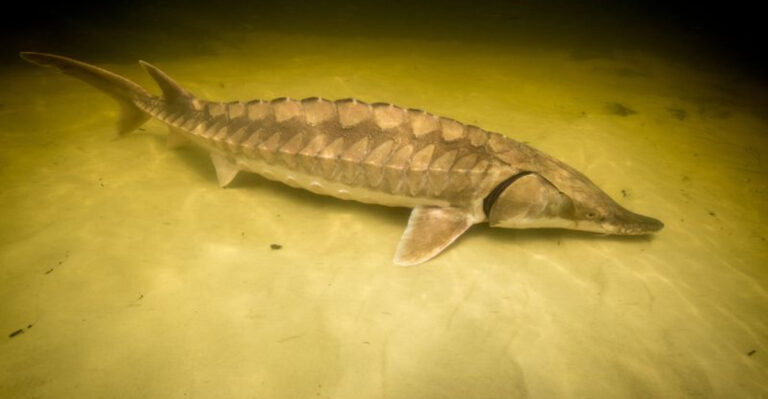You Might Accidentally Be Harming Hummingbirds

Hummingbirds, those tiny aerial acrobats that bring joy to our gardens, are more fragile than they appear. While we often set up feeders and plant flowers to attract these magical creatures, we might unknowingly be creating hazards for them.
Understanding how our everyday actions impact these delicate birds can help ensure they continue to thrive in our backyards and beyond.
1. Red Dye In Nectar

Commercial nectar with red dye can cause serious health problems for hummingbirds. The artificial coloring has no nutritional value and may damage their livers and kidneys over time.
Hummingbirds are naturally attracted to the color red, but it’s the feeder itself that should be colorful, not the liquid inside. Make your own nectar with four parts water to one part white sugar for a healthier alternative.
2. Letting Feeders Go Moldy

Mold grows quickly in sugar water, especially during hot weather. Hummingbirds that drink from moldy feeders can develop a deadly tongue infection called candidiasis, preventing them from eating.
Clean feeders thoroughly every 2-3 days when temperatures exceed 80°F, and at least weekly in cooler weather. Use a bottle brush and vinegar solution to scrub away any black spots or cloudy residue.
3. Using Pesticides On Flowering Plants

Spraying insecticides on your garden eliminates the tiny insects that hummingbirds rely on for protein. These chemicals can also contaminate nectar and poison the birds directly.
Hummingbirds need more than just sugar water to survive. They get essential proteins and minerals from consuming small insects. Consider natural pest control methods like introducing beneficial insects or using manual removal techniques instead.
4. Placing Feeders Near Windows

Hummingbirds can reach speeds of 30 mph during flight, making window collisions potentially fatal. Their tiny bodies are especially vulnerable to impact injuries.
Position feeders either within three feet of windows so birds can’t build up speed, or more than 30 feet away. You can also use window decals or screens to make glass visible to these fast-flying visitors.
5. Forgetting To Refill Feeders

Hummingbirds have incredible memories and develop feeding routes they follow daily. When feeders go empty, birds waste precious energy visiting with no reward, potentially leading to starvation during migration periods.
These tiny creatures have extremely fast metabolisms and need to eat every 10-15 minutes throughout the day. If you’re going on vacation, either take your feeders down completely or ask a neighbor to maintain them.
6. Using The Wrong Sugar Ratio

Making nectar too concentrated can dehydrate hummingbirds and damage their kidneys. Too diluted, and they won’t get enough calories to maintain their incredibly fast metabolism.
The perfect ratio mimics natural flower nectar: one part white granulated sugar to four parts water. Never use honey, brown sugar, artificial sweeteners, or fruit juices, as these can cause fungal infections or provide inadequate nutrition.
7. Hanging Feeders In Full Sun

Nectar ferments quickly in direct sunlight, creating alcohol that can cause fatal liver damage to hummingbirds. Hot locations also accelerate bacterial growth in the sugar solution.
Find a spot that gets morning sun but afternoon shade to keep nectar fresh longer. This natural refrigeration helps prevent harmful fermentation while still allowing you to enjoy watching these beautiful birds visit throughout the day.
8. Leaving Feeders Up Too Late In Fall

Contrary to popular belief, keeping feeders up late doesn’t delay migration. Instead, it supports stragglers and provides crucial refueling stations for birds already on their journey south.
The real danger comes from suddenly removing feeders during peak migration times. Hummingbirds migrate based on daylight hours, not food availability. Keep feeders up until you haven’t seen a hummingbird for two weeks, typically well into fall.
9. Using Feeders With Yellow Insect Guards

Yellow parts on feeders attract wasps and bees, creating competition and potential danger for hummingbirds. These insects can sting hummingbirds or block access to feeding ports.
Choose feeders with red insect guards instead of yellow ones. Some newer models feature special bee-resistant feeding ports that allow hummingbirds’ long bills to reach the nectar while keeping insects out.
10. Allowing Cats Outdoors Near Feeders

Outdoor cats kill millions of birds annually, and hummingbirds are particularly vulnerable when focused on feeding. Even if cats don’t catch them, the stress of predator presence can disrupt feeding patterns.
Keep cats indoors or create a catio for outdoor time. If neighbors have outdoor cats, place feeders at least 10-15 feet above ground level and away from shrubs or structures that cats could use to ambush feeding birds.
11. Using Sticky Pest Traps Nearby

Sticky traps meant for insects can accidentally snare hummingbirds, whose tiny bodies and rapid wing movements make them vulnerable to adhesive surfaces. Once stuck, they rarely escape without help.
Avoid hanging sticky traps near flowering plants or feeders. If you must use them for pest control, place protective cages around them with openings too small for hummingbirds to enter but large enough for target insects.
12. Trimming Bushes During Nesting Season

Hummingbird nests are tiny, walnut-sized structures often built on slender branches. Pruning bushes in spring and early summer can accidentally destroy nests with eggs or nestlings.
Female hummingbirds construct camouflaged nests using spider silk, plant down, and lichen. Before trimming, carefully inspect shrubs and small trees, especially fork-shaped branches. Major pruning is best done in late fall or winter when nests are inactive.
13. Installing The Wrong Type Of Hummingbird Swing

Metal perches can become dangerously hot in summer sun, potentially burning delicate hummingbird feet. Some decorative swings also have tiny gaps that can trap toes or bills.
Choose wooden or plastic perches designed specifically for hummingbirds. Place them in shaded areas near but not directly above feeders. The best swings have smooth surfaces without sharp edges or small openings where tiny body parts could get caught.






